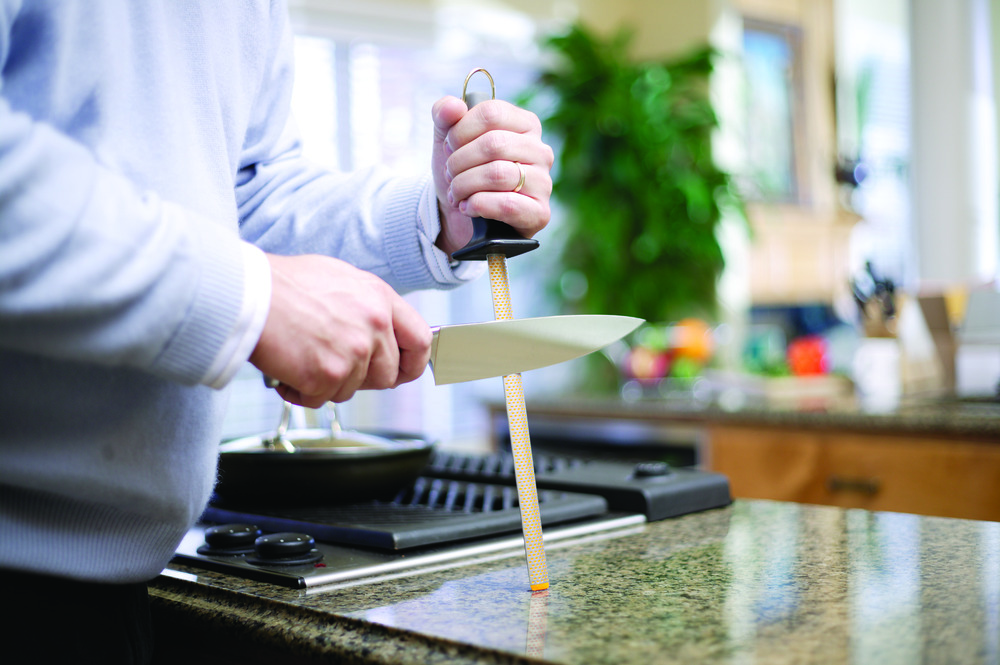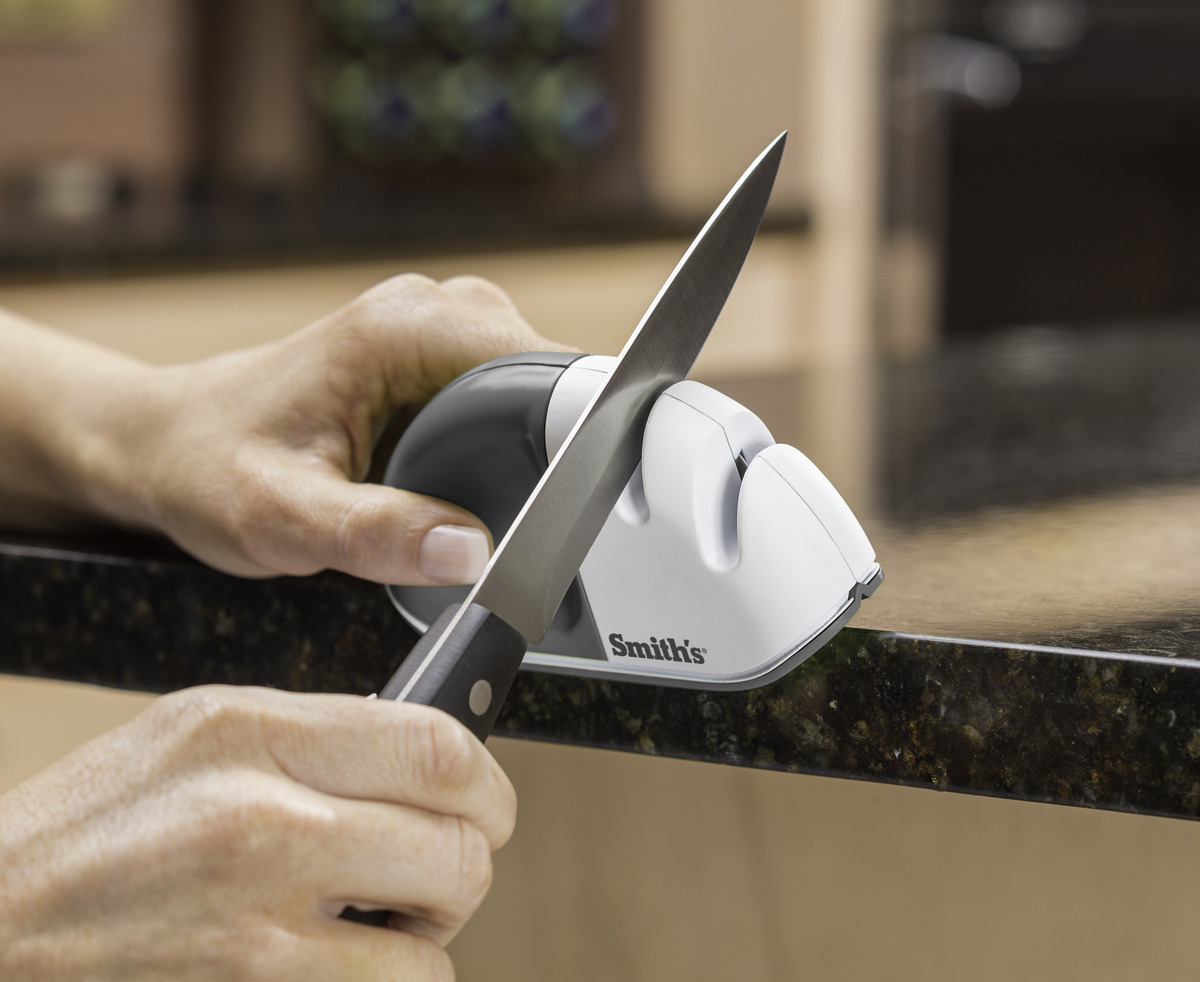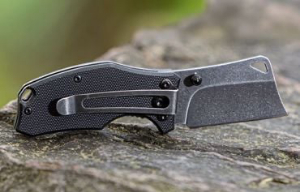
A GUIDE TO KNIFE CARE: WHEN A KNIFE NEEDS TO BE CLEANED AND SANITIZED
Today, we will take you through an essential guide packed with practical and effective strategies to keep your blades clean, sharp, and safe from harmful contaminants. While many believe that knife cleaning is only important when it comes to kitchen use (and we will spend some time on why knife cleaning is particularly important in the kitchen), proper maintenance will extend the lifespan of any knife and help to increase its effectiveness. To provide a short answer, knives that are used in the kitchen need to be cleaned after each use and sanitized at least once a day. However, all knives should be cleaned and sanitized at least once a year as a part of general knife maintenance. Better yet, each time you sharpen your knife give it a quick cleaning for better longevity!
The Risks and Health Implications of Improper Knife Care in the Kitchen
Understanding the risks and implications of improper knife care is necessary to appreciate the importance of properly cleaning and maintaining your tools. At the easiest level, a dirty knife simply does not perform as well as a clean knife. It can affect the quality of your cuts and even alter the taste of your food. But, the problems extend beyond mere inconvenience; improper knife care can pose severe health threats in the kitchen.
Cross-Contamination
Cross-contamination is a term you might have heard before and it's one that you should take very seriously. This food safety hazard occurs when bacteria or other harmful substances are transferred from different foods. For instance, if you use the same knife to chop raw meat and then slice a fruit without properly washing it in between, bacteria from the raw meat, such as salmonella or E. coli, can be transferred to the fruit. This process can lead to foodborne illness that can be devastating to your health and the health of those you're cooking for.
Residual Food Particles
Residual food particles are another significant concern. After cutting, small food particles can adhere to the knife blade, invisible to the naked eye. Over time, these particles can become a source of bacterial growth and may transform a seemingly harmless kitchen knife into a breeding ground for dangerous bacteria. An improperly cleaned knife, hosting these bacteria, can cause food poisoning and other forms of foodborne illnesses.
Comprehensive Guide to Cleaning & Maintaining Knives
Proper cleaning and consistent maintenance of your knives are not daunting tasks. With a good routine and the right tools, these crucial steps can easily be incorporated into your daily life.
Step-by-Step Guide to Cleaning Your Knives
- Initial Clean: To begin, scrape off any visible debris from the knife blade with a paper towel or a clean cloth. Avoid using steel wool or other abrasive scrubs as they may damage the blade.
- Washing: Rinse your knife under warm water and use a mild dish soap to wash the blade and handle. Do not soak the knife in soapy water as this could potentially warp the knife handle. Special care should be taken with knives used to prepare raw meat, as improper cleaning could potentially lead to cross-contamination.
- Sanitizing: After washing, it is advisable to sanitize the knife. An effective sanitizing agent can be a water and bleach solution. Be sure to rinse the knife thoroughly after sanitizing to remove any chemical residue that might contaminate your food.
- Drying: Dry your knife right after washing and sanitizing. Leaving it to air dry could lead to the formation of rust, especially for knives made from high-carbon stainless steel. Invest in a clean towel specifically for this purpose to avoid introducing new bacteria onto the freshly cleaned knife.
Storing Your Cleaned Knife
Rather than keeping your knives in a drawer or on the countertop, consider investing in a knife block, magnetic strip, or a specialized knife tray. These storage options help secure the knife, protect the blade from damage, and keep it out of the reach of children.
Regular Maintenance & Care for Your Knife
Even a well-cleaned knife can lose its efficiency if it becomes dull. The solution to this problem is regular sharpening of the knife blade. How often you should sharpen your knife depends on how regularly you use it – the more frequent the use, the more regular the sharpening routine should be. Check our knife sharpening angle guide for further instructions on sharpening your knives.
At Smith's, we offer a range of sharpening tools that suit all different types of knives, from your daily kitchen knife to your trusty pocket knife. By ensuring both cleanliness and sharpness, you'll effectively lengthen your knife's lifespan.
Now that you have a better understanding of cleaning and maintenance processes, let’s move on to some advanced knife cleaning techniques to ensure the total eradication of harmful bacteria and rust from your tools.
Advanced Knife Cleaning & Maintenance Techniques
So far, we've covered the basics of regular maintenance and cleaning of your knives – procedures that are essential for ensuring the longevity of the tool, food hygiene, and efficient performance. For those who want to further safety and longevity, advanced cleaning and maintenance techniques can offer even greater assurance.

Pro Tip #1: Three-Compartment Sink Cleaning Method
This method, often used in professional kitchens, is an excellent way to ensure thorough cleaning of your kitchen tools. It involves three steps – cleaning with soapy hot water, rinsing with clean water, and a final plunge into a sanitizing solution. You can then dry the knife with a clean towel, the same as in the traditional cleaning method. This routine ensures any residue or bacteria is entirely removed from the knife before it is put back into use.
Pro Tip #2: Proper Hygiene for Food Handlers
Cleaning and maintaining your knives are necessary steps to preventing cross-contamination and promoting food safety. But don’t forget - the people handling the food should also take measures to ensure cleanliness. Regular hand washing with soap and warm water, hand sanitizing, and avoiding touching faces or any other body parts before handling food is recommended.
Pro Tip #3: Always Follow The Manufacturer's Instructions
It's always a good idea to refer to the user manual or any knife hygiene instructions provided by the manufacturer. Different knives might require unique cleaning and maintenance procedures based on their material, structure, and other design elements.
How Smith’s Can Help
Proper knife care is not just about maintaining a sharp edge but is also a crucial component of food safety when used in any kitchen. Neglecting to clean and sanitize your knives can lead to cross-contamination, foodborne illnesses, and even allergic reactions, posing significant risks to your health and the health of those you're cooking for.

To ensure your knives are clean, sharp, and safe to use, we suggest incorporating Smith's honing solution into your knife maintenance routine. With built-in stone cleaning agents and rust corrosion inhibitors, this solution prevents rust and improves the function of your sharpening stones. And don't forget to explore Smith's wide range of knives and knife sharpeners while you are at it - our collection features the perfect solution for every knife and tool out there.




